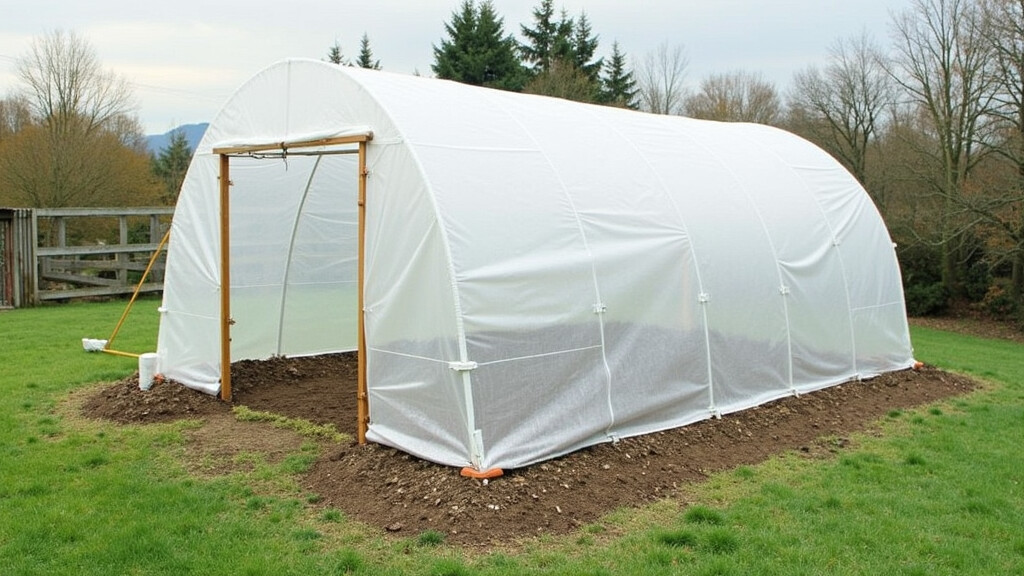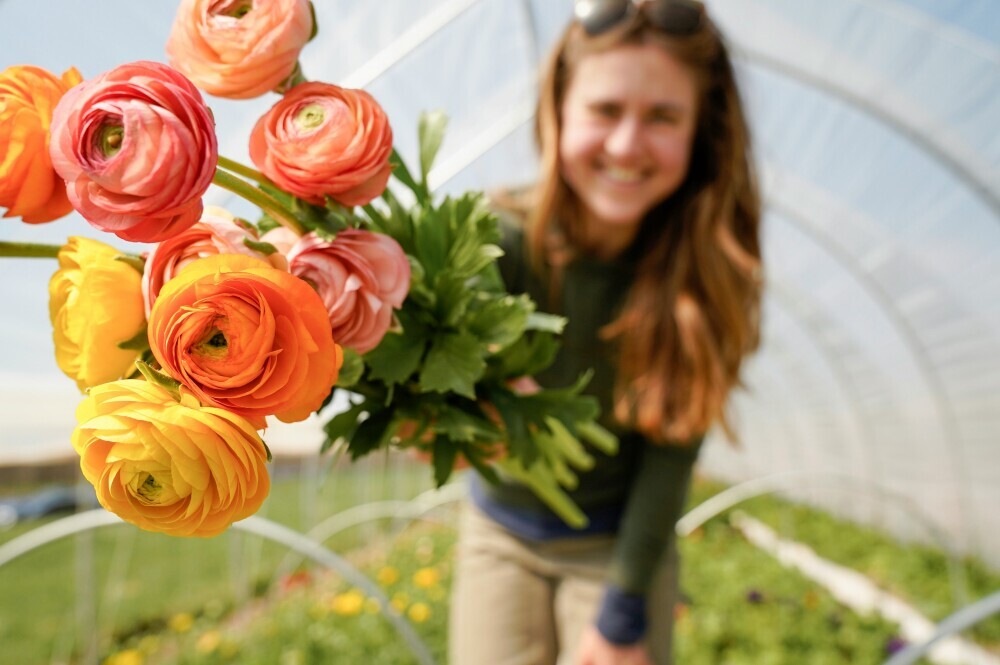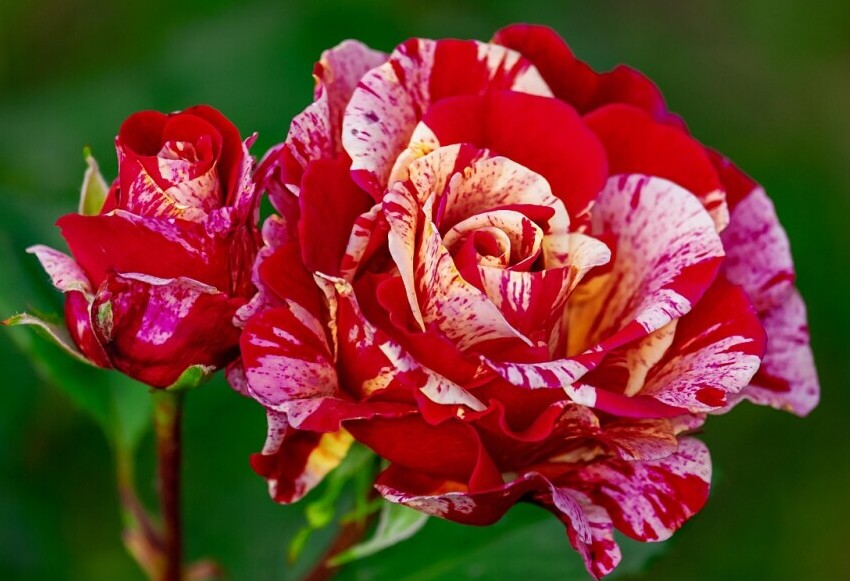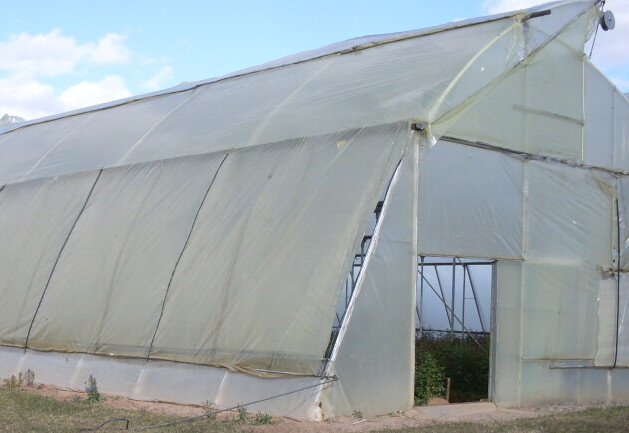Roses, often referred to as the queens of the garden, require specific environmental conditions to thrive.
When grown in a small greenhouse, temperature control becomes even more critical to ensure healthy growth, vibrant blooms, and disease prevention.
A well-regulated greenhouse extends the growing season, protects roses from harsh weather, and promotes consistent flowering year-round.
However, maintaining the ideal temperature in a small greenhouse is a delicate balancing act.
Without proper adjustments, excessive heat can cause wilting and bud drop, while cold temperatures can slow growth and make roses vulnerable to disease.
This guide will equip you with the best methods and tools to maintain optimal temperatures and help your roses flourish.
Why Temperature Matters for Roses
The right temperature is vital for the overall health of roses, influencing:
1. Growth and Development
- Roses thrive within an optimal temperature range. If temperatures drop too low, growth slows or stops completely. Conversely, excessive heat stresses the plant, causing leaf scorching and bud abortion.
- Temperature directly affects root development, stem strength, and foliage density, all of which contribute to a healthy plant structure.
2. Disease and Pest Resistance
- Consistent temperatures help maintain strong plant immunity, making roses less susceptible to fungal diseases like powdery mildew , black spot and downy mildew.
- Sudden temperature fluctuations can weaken plant defenses, making roses more attractive to pests like aphids and spider mites.
3. Bloom Quality and Longevity
- A steady climate supports the development of large, fragrant, and long-lasting blooms.
- Sudden cold snaps can cause bud blasting, while excessive heat can result in faded or poorly-formed flowers.
Ideal Temperature Range for Roses in a Greenhouse
The recommended temperature range for growing roses in a small greenhouse is:
Growth Stage – 60-75°F (15-24°C)55-65°F
Ideal Day Temperature 65-75°F (18-24°C)
Ideal Night Temperature55-65°F (13-18°C)
Active Growth 60-75°F (15-24°C)55-65°F (13-18°C)
Flowering 60-65°F (15-18°C)
Dormancy (Winter)50-60°F (10-15°C)- 40-50°F (4-10°C)
Note: Certain rose varieties have specific temperature preferences, so researching your variety’s needs is crucial.
Methods for Maintaining the Right Temperature
i. Ventilation
Proper airflow prevents overheating and humidity buildup, both of which can promote fungal infections.
- Roof Vents: Allow hot air to escape naturally, reducing heat buildup.
- Side Vents & Louvers: Promote cross-ventilation by drawing cool air in from one side while warm air exits through the other.
- Automatic Vent Openers: These respond to temperature changes, ensuring vents open and close as needed.
- Oscillating Fans: Keep air circulating to prevent hot and cold spots and strengthen rose stems.
ii. Heating Solutions for Cold Weather
Maintaining a warm environment is crucial during colder months, especially for tender rose varieties.
- Electric Heaters: A reliable choice for small greenhouses. Choose models with built-in thermostats for precise temperature control.
- Propane Heaters: Effective but require proper ventilation to prevent carbon monoxide buildup.
- Infrared Heaters: Provide direct heat to the plants, reducing energy consumption.
- Heat Mats: Useful for keeping the soil warm and protecting root systems in winter.
iii. Cooling Techniques for Hot Weather
Roses can suffer from heat stress if the greenhouse becomes too hot. Implement these strategies:
- Shade Cloth: Reduces sunlight intensity. Different densities provide varying degrees of shading (30-50% shade recommended for roses).
- Misting Systems: Lowers temperature through evaporative cooling. Be mindful of humidity levels to prevent fungal growth.
- Evaporative Coolers (Swamp Coolers): Ideal for dry climates, cooling the air as water evaporates.
- Damping Down: Lightly watering greenhouse surfaces in the morning helps maintain humidity and cool temperatures.
iv. Insulation for Year-Round Stability
Proper insulation minimizes heat loss in winter and reduces overheating in summer.
- Bubble Wrap Insulation: Acts as an extra barrier to retain heat.
- Greenhouse Film: Helps moderate temperature fluctuations.
- Thermal Mass Storage: Water barrels or stone floors absorb heat during the day and release it at night.
v. Temperature Monitoring and Automation
To keep greenhouse temperatures consistent and optimal, consider:
- Digital Thermometers: Place thermometers at different locations inside the greenhouse to monitor variations.
- Data Loggers: Track long-term temperature trends to make necessary adjustments.
- Automated Climate Controls: Systems that regulate heating, cooling, and ventilation, providing effortless management.
Additional Tips for Success
- Design Your Greenhouse Thoughtfully: Position your greenhouse where it receives maximum sunlight exposure during winter and some afternoon shade in summer.
- Know Your Rose Varieties: Different varieties may require slightly different temperature ranges.
- Regularly Inspect Equipment: Check heaters, fans, and vents to ensure they are functioning properly.
- Automate When Possible: Investing in automatic vent openers and thermostats can significantly simplify temperature management.
- Watch Humidity Levels: While roses enjoy moderate humidity, excess moisture can encourage fungal infections.
Frequently Asked Questions (FAQs)
1. What is the best temperature for growing roses in a small greenhouse year-round?
The ideal daytime temperature for roses is between 65–75°F (18–24°C), while nighttime temperatures should be kept between 55–65°F (13–18°C). During dormancy in winter, temperatures can be lowered slightly to 50–60°F (10–15°C) during the day and 40–50°F (4–10°C) at night.
2. Do roses need a heated greenhouse in winter?
Yes—especially if you’re growing tender or non-dormant varieties. Roses require consistent warmth to thrive during winter. Small greenhouses should have electric or propane heaters and insulation to maintain root and air temperatures and prevent cold damage.
3. Can I grow roses in a greenhouse without electricity?
Yes, but it’s more challenging. You’ll need to rely on passive solar heating, thermal mass (like water barrels or stone floors), and manual ventilation. Choose cold-hardy or dormant varieties and add bubble wrap insulation to retain heat.
4. How do I prevent overheating in my small greenhouse during summer?
To avoid heat stress:
- Use shade cloth (30–50% shading for roses)
- Install roof and side vents for natural airflow
- Use oscillating fans for air circulation
- Apply damping down to cool the surface and raise humidity
- Consider evaporative coolers for hot, dry climates
5. Is humidity control as important as temperature control in rose greenhouses?
Absolutely. High humidity can promote fungal diseases like black spot, powdery mildew, and botrytis. Maintain humidity around 50–70%. Use hygrometers, ensure proper ventilation, and avoid over-misting.
6. Can temperature fluctuations harm roses in a greenhouse?
Yes. Sudden changes in temperature can cause:
- Bud drop
- Reduced flowering
- Weaker stems
- Increased pest and disease vulnerability
Consistent monitoring and the use of automatic climate controls or data loggers can help prevent temperature swings.
7. Do different rose varieties need different temperature ranges?
Yes. Hybrid tea roses, miniature roses, and old garden roses may have slightly different optimal temperature preferences. Always check the cultivar’s growing needs, especially if you’re growing heirloom, tropical, or climbing types.
8. How do I monitor temperature in a small greenhouse effectively?
Use a digital thermometer at both plant height and soil level, and place it in both shaded and sun-exposed areas. Consider using data loggers to track temperature trends over time and automated thermostats for real-time adjustments.
9. What type of heater is best for a small rose greenhouse?
- Electric heaters with thermostats offer precise temperature control and are safe and efficient.
- Propane heaters are powerful but require careful ventilation to prevent gas buildup.
- Infrared heaters provide localized heat directly to plants and are energy-efficient.
10. How can I reduce heating costs in winter for my greenhouse roses?
- Use thermal mass storage (e.g., water barrels) to absorb and release heat
- Insulate with double-layered greenhouse film or bubble wrap
- Seal any air leaks or gaps
- Use automatic vent closures to retain warmth at night
11. Can roses survive if the greenhouse gets too cold overnight?
Some hardy rose varieties can tolerate brief dips in temperature, but prolonged exposure to cold below 40°F (4°C) can damage tender stems and buds. It’s important to insulate and supplement with heating during extreme cold spells.
12. Should I run ventilation fans during winter?
Yes, but run them intermittently. Ventilation in winter helps:
- Prevent condensation buildup
- Reduce humidity-related diseases
- Keep air circulating evenly
Use humidity sensors or timed vents for efficiency.
13. How do I automate temperature control in my greenhouse?
You can use:
- Automatic vent openers that react to temperature
- Thermostatically controlled heaters or fans
- Climate control systems with remote monitoring or app control
These tools help maintain consistency without constant manual adjustments.
14. Is it better to grow roses in soil or containers in a small greenhouse?
Both methods work well, but:
- Containers offer more control over soil and drainage and are easier to reposition
- In-ground beds are better for larger greenhouses and deeper root development
Regardless of method, temperature consistency is key.
15. Can I grow roses year-round in a small greenhouse?
Yes—with proper heating, cooling, and lighting, you can grow and bloom roses year-round. Be sure to adjust watering, fertilization, and pruning schedules according to seasonal growth stages.
Conclusion
Maintaining the right temperature in a small greenhouse is essential for cultivating healthy, blooming roses year-round.
By balancing ventilation, heating, cooling, and insulation, you can create an optimal environment that supports strong growth and continuous flowering.
With consistent monitoring and proactive adjustments, your roses will reward you with lush, vibrant blooms season after season.
Happy growing!
Here’s a little transparency: Our website contains Amazon affiliate links. This means if you click and make a purchase, we may receive a small commission. Don’t worry, there’s no extra cost to you. It’s a simple way you can support our mission to bring you quality content.”





My grandfather absolutely loved Roses and cultivated them religiously in his front garden, am wondering though. How do different temperature control methods (such as ventilation, heating, and cooling) interact to create an optimal environment for rose cultivation in small greenhouses, and what are the potential trade-offs or challenges associated with each method?
Hi Paul,
Thank you for sharing that lovely memory of your grandfather—it’s wonderful to hear how his love for roses left an impression on you. Roses really do have a way of connecting generations, don’t they?
As for your question—it’s a great one!
Creating the ideal temperature in a small greenhouse for roses involves finding the right balance between ventilation, heating, and cooling, and each method plays a key role while bringing its own set of considerations.
1. Ventilation (Passive and Active)
Purpose: Prevents overheating, removes excess humidity, and improves air circulation—crucial for disease prevention.
How It Helps: In mild climates, opening vents or windows can be enough to maintain stable temperatures during the day.
Trade-Offs: Relying too heavily on passive ventilation during colder months can lead to heat loss. Active ventilation (fans) works better but requires energy and regular maintenance.
2. Heating
Purpose: Keeps temperatures above the minimum threshold, especially during cold nights or winter months.
How It Helps: Roses prefer temperatures between 15–26°C (60–80°F). Supplemental heat ensures they don’t dip below 10°C (50°F), which can stress the plants.
Trade-Offs: Heating adds to operating costs and requires monitoring to avoid overly dry air. Electric heaters with thermostats are efficient but need good airflow to avoid hot/cold spots.
3. Cooling (Shade + Fans or Evaporative Systems)
Purpose: Prevents heat buildup on hot days, especially in warmer regions or summer months.
How It Helps: Shade cloths and misting systems lower internal temperatures and protect blooms from scorching.
Trade-Offs: Overcooling or excess moisture can increase humidity, which may promote fungal issues. It’s all about fine-tuning—cooling just enough without creating a damp environment.
The Key Is Integration
The most successful setups combine all three methods:
Use passive ventilation during the day, and supplement with fans if needed.
Add heating only when temperatures drop, ideally with a thermostat for automation.
In hotter climates, incorporate shade cloth and cooling systems with good drainage and air movement to avoid stagnant, humid air.
Final Tip
A digital thermometer with min/max tracking helps you monitor trends and catch any extremes early. Roses are resilient, but consistency is key to keeping them happy and blooming beautifully.
Thanks for your comment—it was a pleasure to read!
Best regards,
Raymond